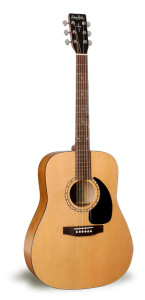My iMac is getting a bit long in the tooth. I got it in the spring of 2010. It is thus a late 2009 vintage iMac. It came with OS X Snow Leopard. And although it has done some updating of its operating system over the years, as of this morning it was still running Snow Leopard, version 10.6.8.
I’ve never had any problems with this machine.
Wait. This is closing in on six years, so maybe I’d better repeat that.
I’ve never had any problems with this machine.
Nevertheless, Snow Leopard is nearing the end of its natural life. Google Chrome will soon no longer update on it. I’m already a number of versions behind in LibreOffice. And even the program I use most, i.e. Scrivener, has been hinting that I’m well behind the times. So I thought it might be time to make a little change.
Of course OS X El Capitan has lots of cool features. Unfortunately, hardware of this vintage can’t exploit some of those. So my motivation was primarily to gain access to current and ongoing security and stability updates for my operating system. And there was also the nice carrot of potentially being able to download the latest version of LibreOffice as well.
But new(er) operating systems usually come with higher demands than whatever your computer came pre-installed with. It didn’t take much effort to learn that for a machine like mine, I would need to first upgrade my RAM. This is the main culprit in the poor performance many have experienced when they upgraded to Apple’s later OS Xs. The 4 GB of 1067 MHz DDR3 memory I had on board just wasn’t going to cut it in the brave new world I’d be entering. Perhaps for this reason Apple have provided an incredibly straightforward page for people to determine precisely what memory modules their machines can take and simple instructions on how to install them.
I was able to track down a nice 8 GB kit (2 x 4 GB modules) from Crucial. I got it at a good price as well. And it came in the post in only a few days.
Before the new RAM arrived I took the opportunity to audit the software on my machine and see how much of it would be immediately compatible with El Capitan. As noted, Scrivener was the key program and I already knew that it was El Capitan ready. I also use a program called iBank on a regular basis. It too was ready and waiting for the upgrade. So nothing was obviously holding me back.
But what about peripherals? I had come across a case of someone upgrading without adequate preparation only to discover that he could no longer access his printer after the upgrade. Well, there was probably more going on there than I knew, but better safe than sorry. Fortunately I was quickly able to discover that there were El Capitan compatible drivers for my printer. So all that was left was to wait for the postman to arrive.
…
…
Finally!
It would be churlish to describe the installation of the new RAM as easy. It was in fact idiotically easy. In less than 10 minutes I was up and running with, now, 12 GB of 1067 MHz DDR3 memory. And with that in place I quickly moved to download El Capitan from Apple’s app store.
It turns out that El Capitan is a 6.8 GB download. So that took some time. But once it was downloaded I clicked one button to initiate the installation. And then I waited. And waited. And waited. Installing El Capitan is a good time to read a book, or go grocery shopping. When you get back, you are ready to go.
I logged in to the new system and voilà. I’m good to go.
Of course I took my time going over all my programs to make sure everything actually worked. All of them did. Well, all but one. Apple has discontinued iPhoto. That was a bit of a shock since I do use that for all of our pictures. But Apple has replaced it with Photos, which after a lengthy incorporation of my photo library turns out to be just as good.
I’ve tested the printer. I’ve upgraded to LibreOffice 5.0.4.2 (I’d previously been using 3.0). And here I am writing this blog post using Scrivener. So I guess I’m done.
It was all pretty painless, really. And now I’ll see if I can keep this nearly 6-year-old iMac in shape for another few years.
The publication of a work by one of the writers in our group is an occasion of joy. Seeing something that you’ve watched gestate, develop, and mature over the years take wing and start flying on its own—well, it feels good. I imagine the only thing that would top it would be for a book of my own to begin its life on the book store shelves. Maybe some day I’ll find out.



